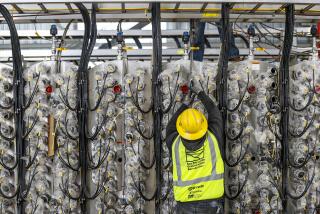Sewage Composting Plant Approved
After months of delays and a last-ditch effort by opponents, a composting facility for human waste in the High Desert won approval from the Los Angeles County Board of Supervisors on Tuesday.
As expected, the board voted to go forward with the project over the sole objections of County Supervisor Mike Antonovich, who represents the area near Lancaster where the 67-acre facility would be located.
Opponents, who include developers of a nearby subdivision and the city of Lancaster, say that the high winds that whip through the desert would spew drying sludge from the project into the air, and contaminate nearby homes.
“The Board of Supervisors began germ warfare against the Antelope Valley today,” groused Jane Williams, a local environmentalist who opposed the project.
She said opponents were considering filing a lawsuit to stop the plan from going forward.
As approved, the facility would take in 500 tons of treated sewage and 1,000 tons of other biodegradeable waste each day. Much of it would come from the Hyperion Sewage plant in Los Angeles.
It has taken years for the project to win approval. It was initially approved by the Regional Planning Commission, then later denied by the same body after the supervisors ordered it to examine the issues again.
The denial came after Bio Gro refused to build an enclosure around the plant, which neighbors had requested as a way to reduce the blowing of sludge.
*
Company officials took their case to the Board of Supervisors, which in June 1997 signaled its intent to approve it without requiring an enclosure.
But several delays ensued, including the filing of citations against Bio Gro for allowing sludge from another operation on the same site to leak off the property in last winter’s rains.
Chuck Fryxell, air-pollution control officer for the area, said earlier that he is concerned that summer winds, which average 20 to 25 mph in the area, will blow particulates and heavy metals into the air once the facility is up and running.
If pollution problems ensue from the site, he said at that time, the newly formed Antelope Valley Air Pollution Control District will probably attempt to force the company to enclose the plant.
More to Read
Sign up for Essential California
The most important California stories and recommendations in your inbox every morning.
You may occasionally receive promotional content from the Los Angeles Times.










